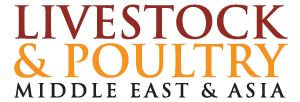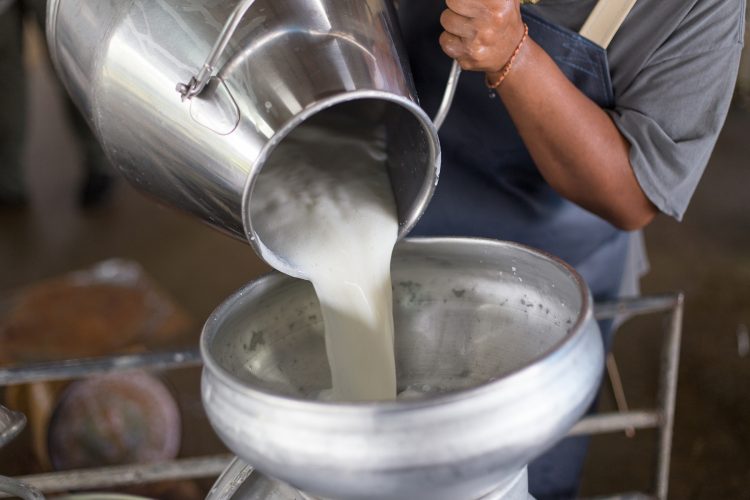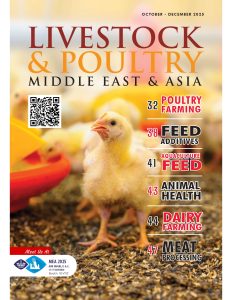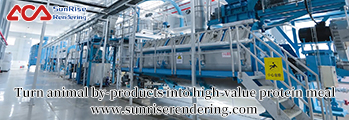Many challenges confront today’s dairy industry that require farmers to be knowledgeable, innovative, and constantly improving to stay competitive. Mastitis remains the most frequent health problem affecting the dairy industry as it is assessed by somatic cell count (SCC). Udder inflammation lowers milk quality, harms animal welfare and reduces the job satisfaction of dairy farmers. It also leads to substantial economic losses and increased use of antibiotics for mastitis treatment, which poses risks of antimicrobial resistance and milk contamination. A promising and innovative solution is to feed dairy cows with phytogenic feed additives like Anta®Phyt, which can boost their immune systems and prevent mastitis while reducing the need for antibiotics.
Somatic cell count: an ally that comes with drawbacks
In a sense, SCC functions like two sides of a coin. As somatic cells are part of the innate immune system of dairy cows that provides a rapid and nonspecific response to foreign invaders, they are also an indicator of susceptibility to mastitis or poor udder health. White blood cells, such as neutrophils and macrophages, and epithelial cells are the main components of SCC. While the mammary gland’s epithelial cells are usually shed and renewed, the white blood cells migrate to the site of infection and release various substances to kill or neutralize pathogens. They also produce cytokine signalling molecules that regulate inflammation and coordinate the immune response. However, SCC can also negatively affect the udder and milk quality. When SCC is too high or prolonged, it can cause tissue damage and impair milk synthesis. The substances released by white blood cells can degrade the milk components, such as fat, protein, and lactose, and increase the somatic cell score (SCS), a logarithmic transformation of SCC. In the event of high SCS, milk’s shelf life and processing value are reduced, increasing the risk of penalties or price deductions from milk buyers. Therefore, SCC is a complex and dynamic parameter that reflects the udder’s balance between immunity and threat. A SCC below 200,000 cells/mL is considered normal and safe for individual cows, while a SCC above 500,000 cells/mL indicates clinical mastitis, a severe infection requiring immediate treatment. A SCC between 200,000 and 500,000 cells/mL may indicate subclinical mastitis, a mild infection that does not show visible symptoms but still affects milk quality and yield. Dairy farmers must monitor and manage SCC to optimize milk production, quality, animal welfare, and profitability.
Feed cow immune system without cutting corners
The SCC threshold between threat and safety is not a fixed value but depends on multiple factors, such as the stage of lactation, the breed of the cow, the season, the age and the type of infection. Regardless, a cow’s immune system depends largely on its nutritional status, and when nutrition is compromised, the immune system becomes weaker and more susceptible to bacterial infections in the udder, leading to increased incidence. Antibiotic usage is the first port of call as the primary treatment option for udder inflammation, but it comes with several drawbacks, such as antimicrobial resistance, antibiotic residues in milk and environmental impact. Supplementing dairy cows with phytogenic feed additives like Anta®Phyt ensures killing two birds with a stone, i.e. enhancing the immune system beyond the average level and reducing antibiotic usage. Anta®Phyt helps herds cope better with infections that affect the udder by providing an antimicrobial effect and modulating the microbiota of the udder, leading to better overall health and performance. In a field study comprising three dairy farms with an average of 180 dairy cows, supplementing dairy cows’ diet with Anta®Phyt reduced SCC across the three farms to an average of 196,000/ml compared to the period before and after supplementation withdrawal (Figure 1).
![]()
Figure 1: Changes in the SCC of three dairy farms across three different periods of supplementation with or without Anta®Phyt
Don’t stop at just enough
Dairy herd health management is crucial in the fight against antimicrobial resistance and antibiotic usage. It requires continuous hygiene improvement, frequent animal check-ups, regular herd screening for common diseases, and isolation of new animals before joining the herd. In addition, dairy cattle need suitable housing (good ventilation, appropriate humidity, low stocking densities, and good hygienic practices) to reduce stress and boost their welfare and immunity. As a crucial part of these management measures, high-performance phytogenes such as Anta®Phyt provide the essential extra benefit. By maximizing herd health and welfare with Anta®Phyt, the host immune function improves, and mastitis and other common dairy cattle diseases decrease, reducing the need for antibiotics. Anta®Phyt makes the difference between acceptable results and excellent performance, between just enough and long-term profitability. Don’t settle for less – go for AntaPhyt.


















